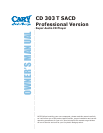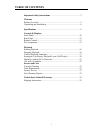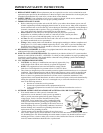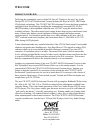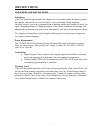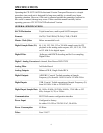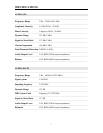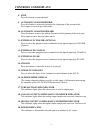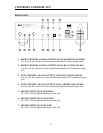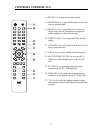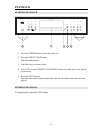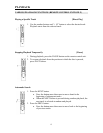
IMPORTANT SAFETY INSTRUCTIONS
15. REPLACEMENT PARTS: When replacement parts are required, be sure the service technician has used
replacement parts specified by the manufacturer or those having the same characteristics as the original parts.
Unauthorized substitutions may result in fire, electric shock or other hazards.
16. SAFETY CHECK: Upon completion of any service or repairs to the unit, ask the service technician to
perform safety checks to ensure the unit is in proper operating condition.
17. IMPORTANT SAFETY NOTE:
• Before connecting a new product such as the CD 303T to your audio or home theater system, turn off
all other equipment (preferably unplugging them from the AC power source). Many audio components
feature automatic turn-on circuits that may activate during an installation, potentially causing damage to
electronic components and/or speakers. This type of damage is not covered by product warranties, and
Cary Audio specifically disclaims responsibility for any such damage.
• Power Cord: The removable power cord provided with your player was specifically
designed for use with this product, but other AC cords may be used. Consult your dealer
for advice on AC power cords and high quality wire in your system.
• AC Fuse: The fuse is located inside the chassis and is not user serviceable. If the unit does not power
up, contact an authorized service representative
• Wiring: Cables running inside walls should have the appropriate markings to indicate compliance and
listing by the UL, CSA or other standards required by the UL, CSA, NEC or your local building code.
Questions about cables inside of walls should be referred to a qualified custom installer, a licensed
electrician, or low-voltage contractor.
18. RECORDING COPYRIGHT: Recording of copyrighted material for other than personal use is illegal
without permission of the copyright holder.
19. NOTE TO CATV SYSTEM INSTALLER: This reminder is provided to call the CATV system installer's
attention to article 820-40 of the NEC, ANSI/NFPA 70, which provides guidelines for proper grounding and,
in particular, specifies that the cable ground shall be connected to the grounding system of the building as
close to the point of cable entry as practical.
20. FCC INFORMATION FOR USER:
• CAUTION: Any changes or modifications not expressly approved by Cary
Audio Design could void the user's authority to operate the equipment.
• NOTE: This equipment has been tested and found to comply with the
limits for a Class B digital device pursuant to Part 15 of the FCC Rules.
• These limits are designed to provide reasonable protection against harmful interference in a residential
installation. This equipment generates and can radiate radio frequency energy, and if not installed and
used in accordance with the instructions it may cause harmful interference to radio communications.
However, there is no guarantee that interference will not occur in a particular installation. If this
equipment does cause harmful interference to radio or television reception, which can be determined by
turning the equipment off and on, the user is encouraged to try to correct the interference by one or
more of the following measures:
• Reorient or relocate the receiving antenna.
• Increase the separation between the equipment and receiver.
• Connect the equipment into an outlet on a circuit different from where the receiver is
connected.
21. OUTDOOR ANTENNA INSTALLATION/SAFE ANTENNA AND CABLE CONNECTION:
• If an outside antenna or cable system is connected to the
equipment, be sure the antenna or cable system is grounded in
order to provide protection against built-up static charges and
voltage surges. Article 810 of the National Electrical Code,
ANSI/NFPA 70 (in Canada, Part 1 of the Canadian Electrical
Code) provides information regarding proper grounding of the
mast and supporting structure, grounding of the lead-in wire to an
antenna discharge unit, size of grounding conductors, location of
antenna discharge unit, connection to grounding electrodes and
requirements for the grounding electrode.
• outside antenna system should be located well away from power
lines, electric light or power circuits and where it will never come into contact with these power sources
if it should happen to fall. When installing an outside antenna, extreme care should be taken to avoid
touching power lines, circuits or other power sources as this could be fatal. Because of the hazards
involved, antenna installation should be left to a professional.
3



